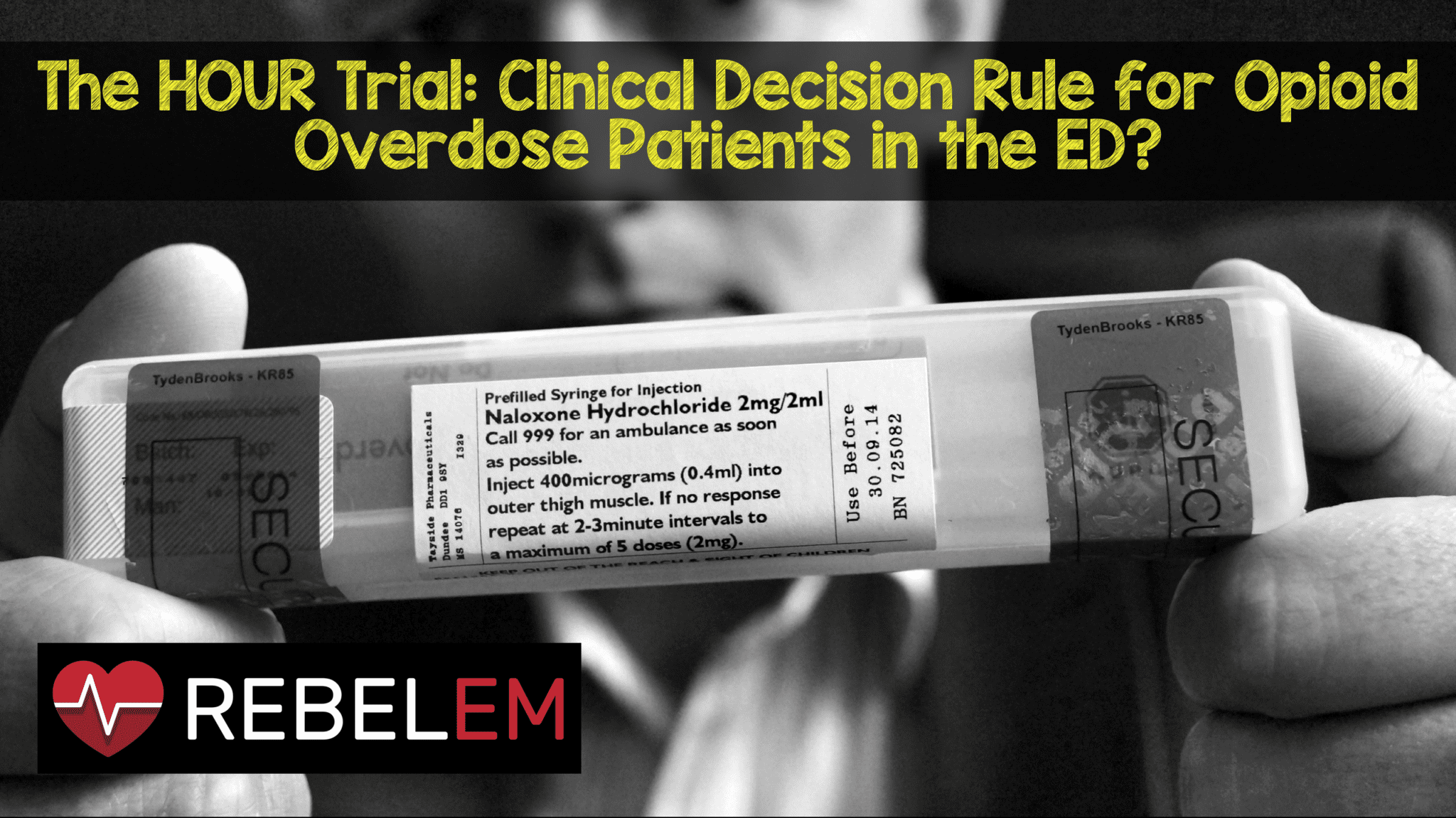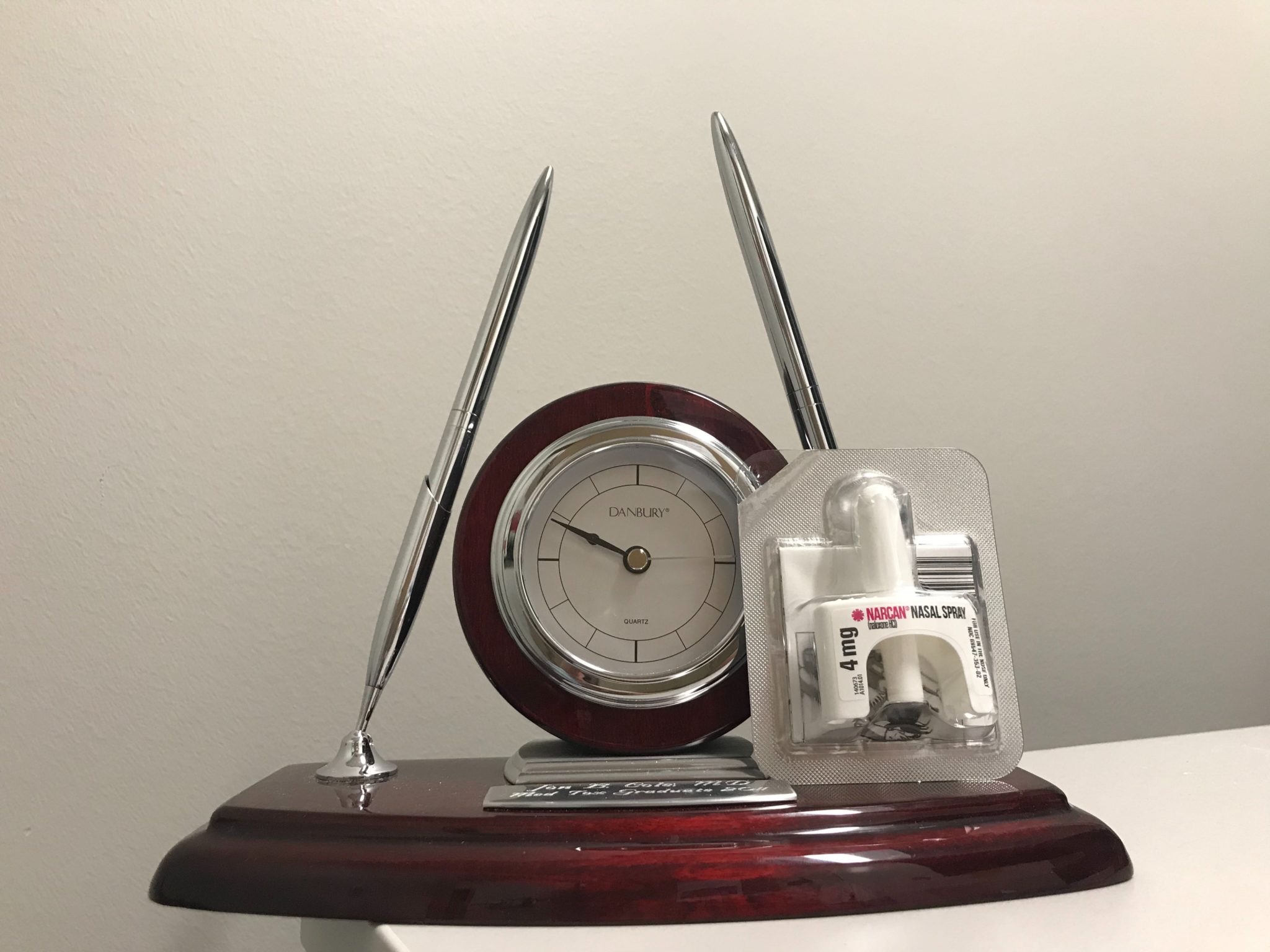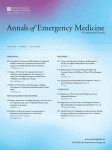- Joined
- May 3, 2004
- Messages
- 3,156
- Reaction score
- 3,751
Original Study:

 www.ncbi.nlm.nih.gov
www.ncbi.nlm.nih.gov
Validation Study:

 www.ncbi.nlm.nih.gov
www.ncbi.nlm.nih.gov
Medscape Article:
https://www.medscape.com/viewarticle/907170
To be fair....a critique from REBEL EM:

 rebelem.com
rebelem.com
St. Paul Early Discharge Criteria:
-Normal ambulation
-Normal oxygen saturation
-Normal respiratory rate
-Normal temperature
-Normal heart rate
-GCS 15
In the words of a journal club attending from residency....
"Well doctors....Does this change your practice? Why or why not?!"

Early discharge of patients with presumed opioid overdose: development of a clinical prediction rule - PubMed
This prediction rule for safe early discharge of patients with presumed opioid overdose performs well in this derivation set but requires validation followed by confirmation of safe implementation.
Validation Study:

Hospital Observation Upon Reversal (HOUR) With Naloxone: A Prospective Clinical Prediction Rule Validation Study - PubMed
This rule may be used to risk stratify patients for early discharge following naloxone administration for suspected opioid overdose.
Medscape Article:
https://www.medscape.com/viewarticle/907170
Most With OD Can Be Discharged From ED an Hour After Naloxone
Most patients who overdose on opioids can be safely discharged from the emergency department (ED) as early as an hour after prehospital administration of the opioid antagonist naloxone, a study has found.
Opioid-related ED visits nearly doubled in the United States from 2005 to 2014. Management of these patients varies among EDs, the authors note.
"Recommendations for patient observation after naloxone administration are inconsistent. Patients can be observed for 6 or more hours, or they can be immediately discharged with no further evaluation," Brian M. Clemency, DO, the Department of Emergency Medicine and the Department of Exercise and Nutrition Science, Jacobs School of Medicine and Biomedical Sciences, University at Buffalo, and the Erie County Medical Center, New York, said in a news release.
"The question is, which of these patients needs to be watched longer?" he asked. "Right now, there isn't a really good rule. This has wide-ranging negative implications for emergency care and opioid use disorder treatment."
The researchers conducted a prospective study to validate the early discharge rule practiced at St. Paul's Hospital, Vancouver, Canada, which allows for discharge after 1 hour for those in whom the following six criteria are within normal limits: ambulation, oxygen saturation (> 95%), respiratory rate (>10 and <20 breaths/min), temperature (>35.0° C and <37.5° C), heart rate (>50 and <100 beats/min), and Glasgow Coma Scale score (15).
The study by Clemency and colleagues was published online December 28 in Academic Emergency Medicine.
"Validation of the St. Paul's Early Discharge Rule is necessary to ensure that these criteria are appropriate to apply to patients presenting after an unintentional presumed opioid overdose in the context of emerging synthetic opioids, expanded naloxone access, and the emergence of intranasal naloxone administration," the researchers explain.
The study included 538 adult patients who presented by ambulance to the ED from 2016 to 2017, who had been administered at least one dose of naloxone before entering the hospital, and who underwent evaluation by an emergency medicine provider 1 hour after naloxone administration. (The typical observation period at the hospital is 4 hours.) The mean age of the patients was 33.4 years, and 69.5% were male.
The researchers examined whether clinical judgment, the St. Paul's Early Discharge Rule, or both, when utilized 1 hour after prehospital administration of naloxone, could predict who would have an adverse event (AE) within 24 hours.
AEs occurred in 82 patients (15.4%), but none died within 48 hours. The most common AEs were need for supplemental oxygen (11.3%), repeat naloxone for hypoventilation (3%), and assisted ventilation (2.6%).
Overall, the rule had a sensitivity of 84.1% (95% confidence interval [CI], 76.2 - 92.1), a specificity of 62.1% (95% CI, 57.6 - 66.5), and a negative predictive value of 95.6% (95% CI, 93.3 - 97.9). The inability to mobilize normally had the greatest sensitivity (58.0%) for predicting AEs; an abnormal temperature had the greatest specificity (99.1%). The rule failed to predict AEs in just 13 of 538 cases (2.4%).
These results are in line with the derivation study by the rule's originators, which found that the AE rate was 16% and the negative predictive value was 99%.
Only one patient in the study whose 1-hour evaluation results were normal subsequently needed additional naloxone following another presumed heroin overdose. "The rule is simple to follow and can be used by health care providers with varying levels of training and experience," Clemency said in the news release. "We anticipate this study will lead to nationally standardized recommendations for the observation of patients following the administration of naloxone for suspected opioid overdose," he continued.
When used in tandem with healthcare provider judgment, the rule had a sensitivity of 87.8% (95% CI, 80.7% - 94.9%), a specificity of 53.0% (95% CI, 48.4% - 57.7%), and a negative predictive value of 96.0% (95% CI, 93.5 - 98.4%). Used together, provider judgment and the St. Paul's Early Discharge Rule predicted AEs in all but 10 of 529 patients (1.9%) .
"Applying the prediction rule for patients for whom providers have a low clinical suspicion for AEs is a reasonable approach for risk stratifying patients for early discharge following naloxone administration for suspected opioid overdose," the authors write. They add, however, that the rule should be used with caution in cases of known oral or mixed overdose. They also call for further study to determine the rule's effectiveness in the context of overdoses of different drugs, drug combinations, and routes of administration.
To be fair....a critique from REBEL EM:

The HOUR Trial: Clinical Decision Rule for Opioid Overdose Patients in the Emergency Department - REBEL EM - Emergency Medicine Blog
The HOUR Trial: Is the St. Paul’s Early Discharge Rule a valid tool in safely discharging opiate overdose patients from the emergency department after a 1-hour observation period following the administration of naloxone?
 rebelem.com
rebelem.com
St. Paul Early Discharge Criteria:
-Normal ambulation
-Normal oxygen saturation
-Normal respiratory rate
-Normal temperature
-Normal heart rate
-GCS 15
In the words of a journal club attending from residency....
"Well doctors....Does this change your practice? Why or why not?!"




